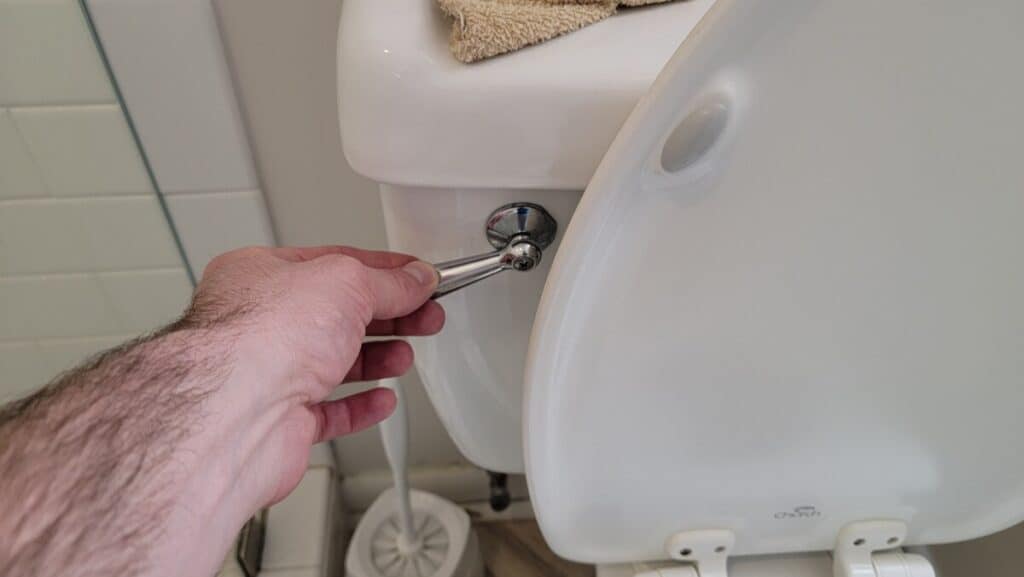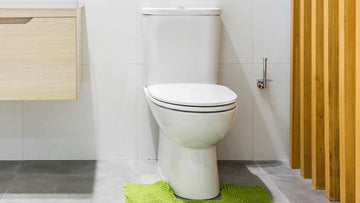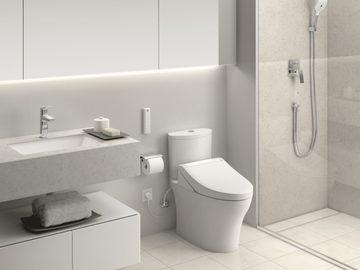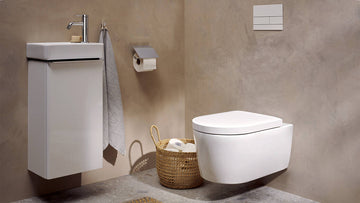In today's world, the importance of water conservation cannot be overstated. With the growing concerns over climate change and dwindling water resources, the push for water-efficient solutions in every aspect of our lives has never been more critical. One of the key areas where substantial improvements have been made is in the realm of toilets. The latest innovations in water-efficient toilets are not only helping households and businesses save water but also reducing water bills and contributing to environmental sustainability.
As industry QA professionals, understanding the advancements in toilet technology is essential for ensuring quality standards and promoting sustainable practices. This article delves into the cutting-edge innovations that are transforming the way we think about and use toilets.

The Rise of Dual-Flush Toilets
One of the most significant innovations in water-efficient toilets is the dual-flush system. These toilets offer two flushing options: a full flush for solid waste and a reduced flush for liquid waste. This system allows users to conserve water by using only the necessary amount for each flush. Dual-flush toilets have been shown to reduce water usage by up to 67% compared to traditional toilets.
Dual-flush technology has become increasingly popular in recent years, with many countries mandating its use in new constructions. For those interested in retrofitting existing toilets with dual-flush capabilities, resources like the retrofits for water-saving toilets guide offer valuable insights.
Pressure-Assisted Toilets: The Next Level
Another innovation in water-efficient toilets is the pressure-assisted flush system. Unlike gravity-fed toilets, pressure-assisted toilets use compressed air to enhance the flushing power. This method not only uses less water but also provides a more powerful flush, reducing the need for multiple flushes. This technology is particularly beneficial in commercial settings where high toilet usage demands robust performance.
Smart Toilets: Integrating Technology
The integration of smart technology into toilets is revolutionizing bathroom experiences. Smart toilets are equipped with features such as automatic flushing, seat warmers, and even water-saving sensors that adjust the amount of water used per flush based on the waste type. These toilets are part of a broader trend towards smart homes, where appliances and fixtures communicate and adapt to user preferences.
For a closer look at how technology is reshaping water conservation, consider reading about the water sensor with adhesive, which can be instrumental in detecting leaks and minimizing water wastage.
Composting Toilets: A Sustainable Alternative
For those committed to sustainability, composting toilets offer an environmentally friendly option. These toilets do not require water for flushing, instead using natural processes to decompose human waste into compost. While more common in off-grid and rural settings, composting toilets are gaining traction in urban areas as people become more conscious of their environmental footprints.
Industry Challenges and Considerations
Despite the benefits, adopting innovations in water-efficient toilets does come with challenges. Industry QA professionals must consider factors such as installation costs, user education, and maintenance requirements. It's also essential to navigate varying regulations and standards across regions.
Understanding the nuances of these toilets can guide quality assurance processes, ensuring that products meet both performance and sustainability criteria. For additional insights into how water-saving toilets can prevent leaks, explore the discussion on can water-saving toilets prevent leaks.
Future Trends in Water-Efficient Toilets
Looking ahead, the future of water-efficient toilets is promising. Innovations are continually evolving, with manufacturers focusing on enhancing efficiency and user experience. Emerging trends include the development of toilets that integrate with home automation systems and utilize advanced materials to reduce maintenance needs.
For those interested in the broader context of water conservation, the article on conserving water at home offers practical tips that complement the use of water-efficient toilets.

Conclusion
The innovations in water-efficient toilets are a testament to the capabilities of modern technology to address longstanding issues. As the world continues to grapple with water scarcity, these advancements play a crucial role in promoting sustainable water use. For industry QA professionals, staying informed about these innovations is vital for guiding best practices and contributing to a more sustainable future.
FAQs
Q1: How do dual-flush toilets save water?
A: Dual-flush toilets provide two flushing options, allowing users to select a full or partial flush depending on the waste type. This feature helps reduce water usage significantly compared to traditional toilets.
Q2: What are the benefits of pressure-assisted toilets?
A: Pressure-assisted toilets use compressed air to enhance flushing power, providing a more efficient and powerful flush while using less water. They are ideal for high-usage settings.
Q3: Are composting toilets practical for urban areas?
A: Yes, composting toilets are becoming more viable in urban settings as people seek sustainable alternatives. They do not require water for flushing and can significantly reduce water consumption.






